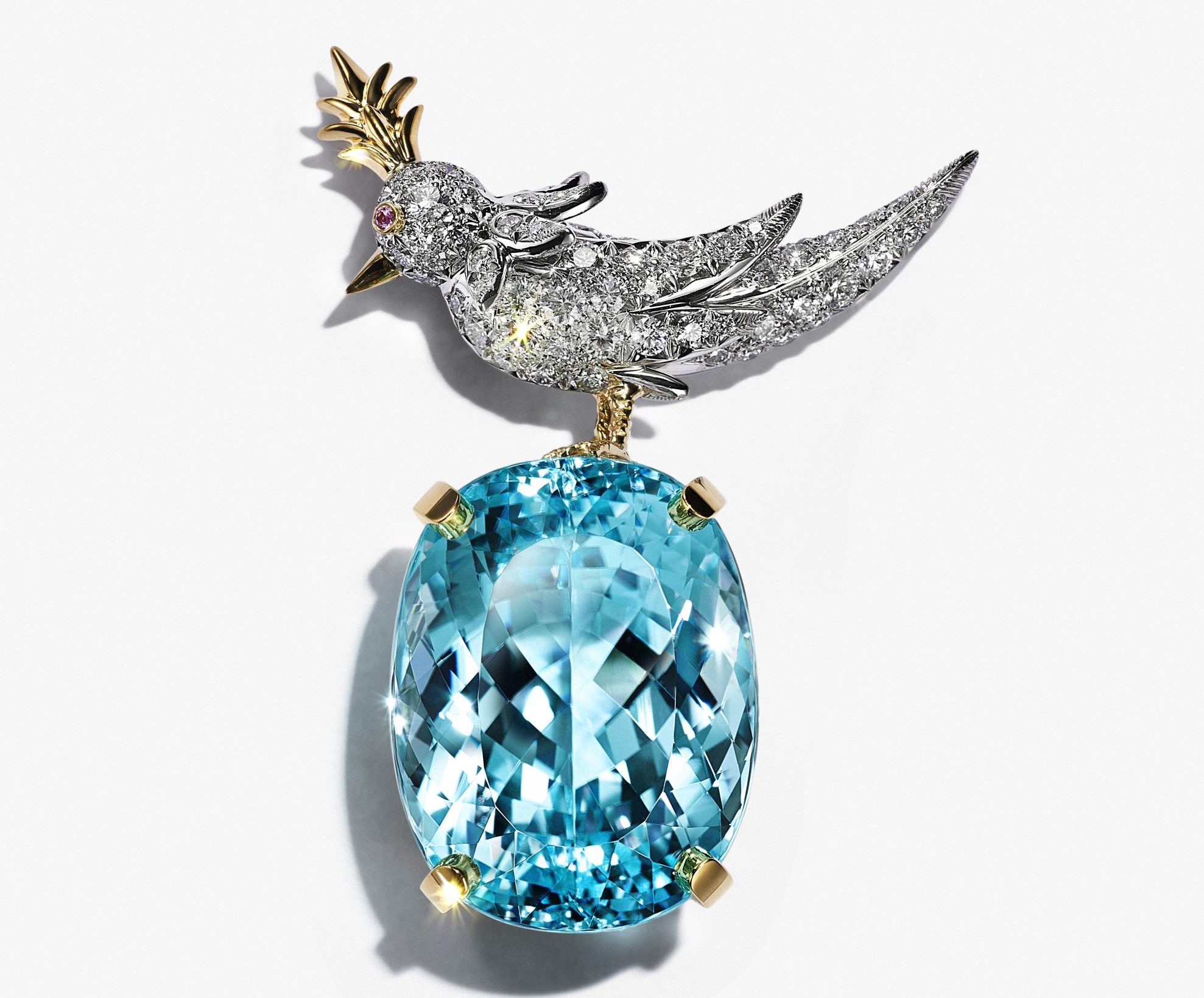
About halfway through “Vision and Virtuosity,” the new exhibition by Tiffany & Co. at London’s Saatchi gallery, is a pair of ornate gold opera glasses. Each lens is circled with enough diamonds to distract the other ladies in the private box (and maybe the soprano onstage). The ultimate ‘see and be seen’ accessory and wealth flex for the 1890s’ upper class, the glasses are the epitome of Gilded Age status-signaling.
In fact, Tiffany has been serving this purpose for nearly two centuries—as “Vision and Virtuosity,” which opened this weekend, is keen to demonstrate. An expanded version of an exhibition which first took place in Shanghai in 2019, it spreads across seven rooms on two floors, with over 400 objects from Tiffany’s archive.
“The exhibition is not just a display of artifacts from our past, but a representation of who we are today and our vision for the future,” Executive Vice President Alexandre Arnault explained in an email. He has been credited with helming the creative overhaul of the brand since LVMH acquired it in 2021 for $15.8 billion. He elaborated, “As our designs continue to evolve, as we engage with artists, filmmakers, collaborators and pioneer new forms of self-expression, everything we do is anchored in innovation. The exhibition embodies this spirit, one that will continue to define Tiffany as an ultimate luxury lifestyle jeweler in forthcoming generations.”
“Vision and Virtuosity” is a sparkly whirlwind of that 185-year history. Charles Lewis Tiffany founded his namesake brand first as a “stationery and fancy goods emporium” in 1837. The focus shifted to jewelry in 1853. Tiffany blue, the brand’s signature color, is wielded liberally. Trademarked in 1998, Pantone number 1837 is a crucial part of the brand’s DNA—the June 9 opening gala even swapped a red carpet for a robin’s-egg-adjacent one to welcome such celebrities as Gal Gadot and Florence Pugh. Leading a preview tour, the show’s curator, Tiffany vice president and creative director Christopher Young, explained the color’s mysterious genesis: “There are many theories,” he said. “Some say it’s because turquoise jewelry was a very popular wedding gift. Some say it’s because it was Empress Eugenie’s favorite color, and so we adapted it as she was a style icon of her era. But we don’t have any precise record. That’s the honest answer.”
Entering Tiffany’s blue dimension at Saatchi Gallery. Courtesy of Tiffany & Co.
It’s hard to resist playing “fantasy jewelry box” amid such a dazzling array of pieces. Elsa Peretti’s designs still seem so modern and minimal, a single chunky diamond on a silk string or a mesh necklace studded with emeralds from the 1970s, are both simple and majestic. Other shining moments include a bracelet of enamel strawberries, coral, and diamonds, made by Donald Claflin in the 1960s, and Frank Gehry’s Guggenheim Bilbao building, reimagined as a diamond brooch.
A gallery is dedicated to the all-star designers: Jean Schlumberger in the 1950s, Peretti in the 1970s, and Paloma Picasso in the 1980s. Many of their designs, like Peretti’s beautiful 1970 Bone Cuff, shaped to mirror the bones in its wearer’s wrist, are still produced today. Large photographs in the show attest to their star power: Grace Jones in a sterling silver Peretti cuff at a 1986 dinner for Andy Warhol, and jewel aficionado par excellence Elizabeth Taylor sporting Schlumberger’s diamond-and-sapphire clip.
A Paloma Picasso necklace in platinum and 18-karat gold with colored gemstones and diamonds. Courtesy of Tiffany & Co.
Another Tiffany hall-of-famer was Gene Moore, who reinvented the concept of window display. Joining the company in 1955, Moore masterminded over 5,000 tableaux, and some have been recreated here as installations, such as a tug-of-war between two figurines over a diamond necklace from 1967. Another vitrine was designed by the not-yet-famous Robert Rauschenberg and Jasper Johns in 1957: “Jewels at the End of a Dock” situates diamond and aquamarine bracelets in a desolate landscape.
The blockbuster gems are balanced with intriguing ephemera. Besides a wealth of sports trophies, there is the 1961 book Tiffany’s Table Manners for Teenagers, images of Marilyn Monroe outside the flagship, and an Andy Warhol-designed Christmas card from the 1950s, and a display of the now-iconic blue boxes.
Accessorized: A 1968 brand advertisement. Courtesy of Tiffany & Co.
The show culminates with the brand’s crown jewel, with which it is synonymous: the Tiffany diamond. The canary-hued stunner lives up to the anticipation, displayed in a dedicated room that inspires hushed reverence. The space echoes the shape of a diamond, and a sole spotlight illuminates the case. Bought by Charles Tiffany in 1877 for $18,000, this 128.54-carat yellow diamond is a serious golf ball of a rock, strung alongside more than 100 carats of white diamonds. You can count the necklace’s past wearers on one hand: Lady Gaga wore it to the Oscars, and Beyoncé rocked it for the brand’s 2021 campaign alongside Jay-Z and a towering Basquiat painting.
It’s famous for a reason. The spectacular necklace composed of the yellow Tiffany diamond surrounded by white diamonds. Courtesy of Tiffany & Co.
Possibly the Tiffany diamond’s most famous appearance was adorning Audrey Hepburn for the Breakfast at Tiffany’s publicity shots. The perennially popular 1961 film, loosely adapted from Truman Capote’s novella, also receives its own room in the exhibition. Alongside Hepburn’s annotated script is the original Givenchy LBD, and a recreation of the 57th Street Tiffany’s entrance, primed for selfies.
Audrey Hepburn’s annotated Breakfast at Tiffany’s script. Courtesy of Tiffany & Co.
The film is just one of the key components in this best-of hits collection. It’s a sprawling show, but the cohesive edit emphasizes the brand’s sleek new direction and establishes the blueprint for the glamorous shape of things to come.
“Vision and Virtuosity” is on view through August 19 at the Saatchi Gallery, Duke of York’s HQ, King’s Road, London, SW3 4RY.